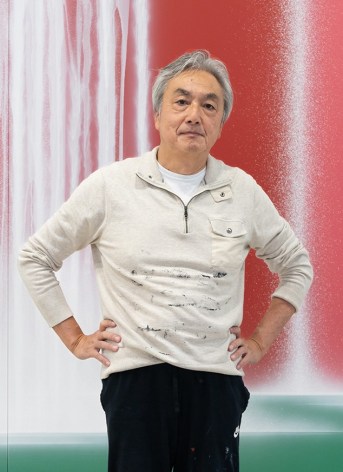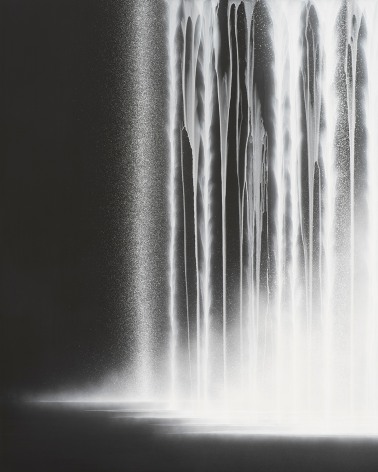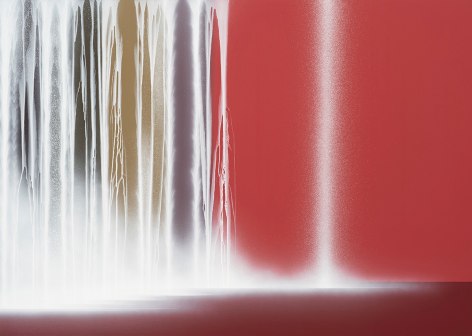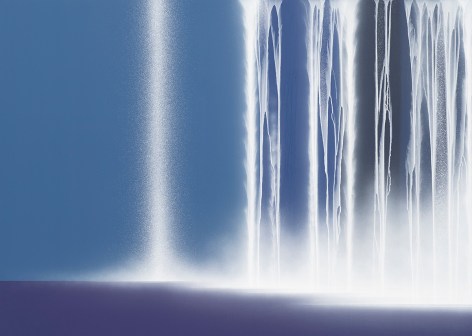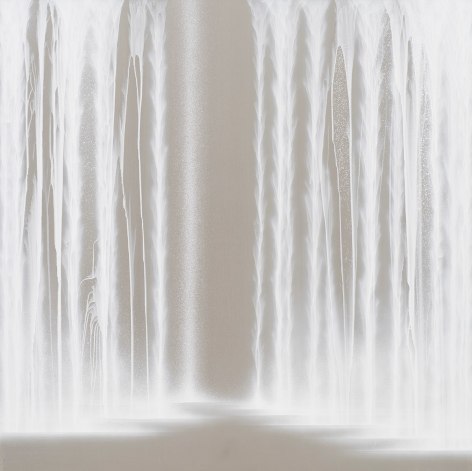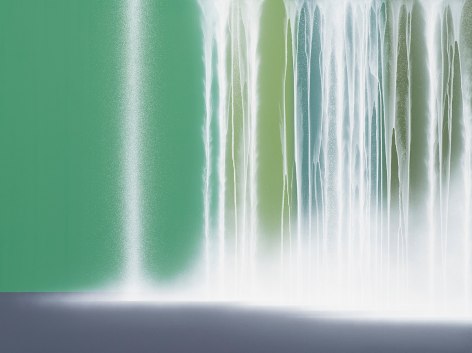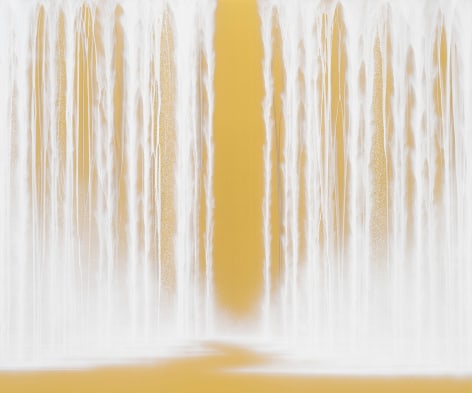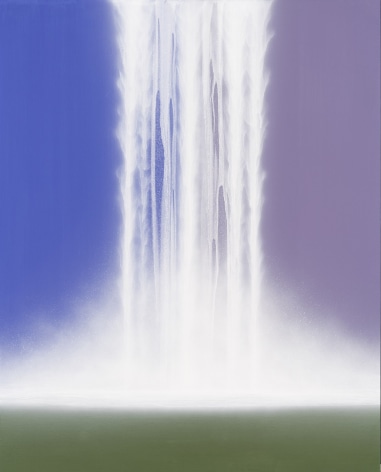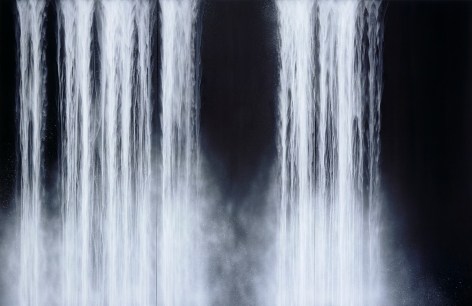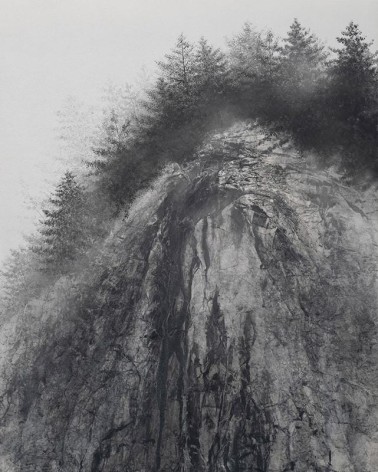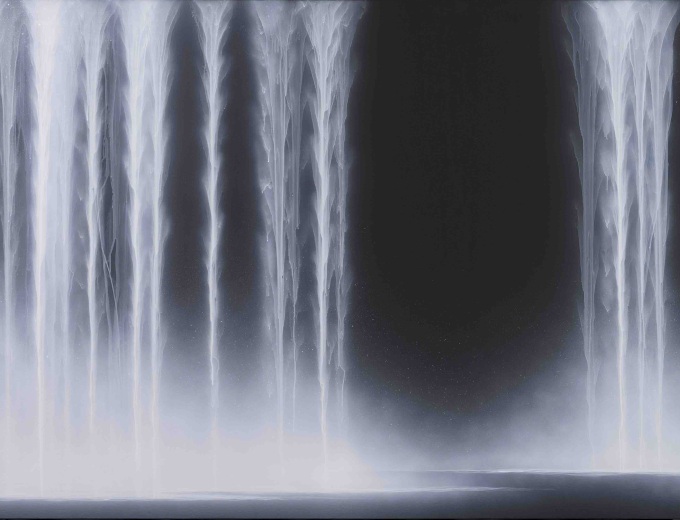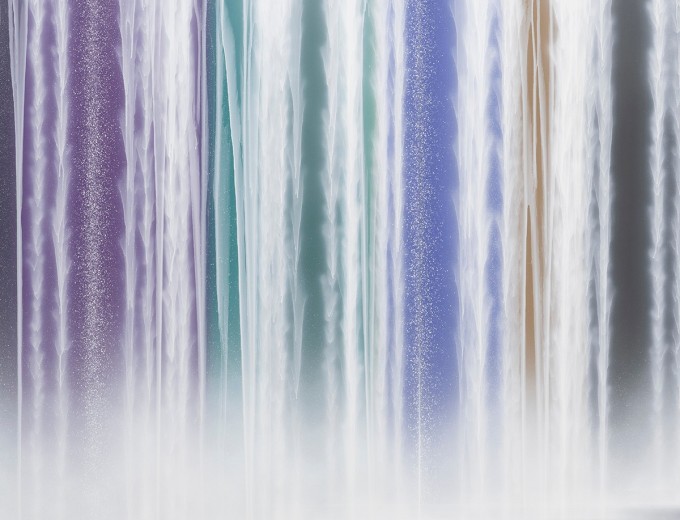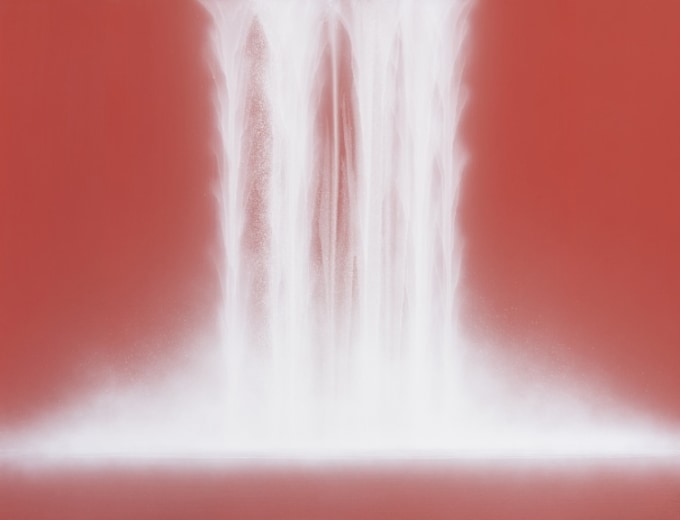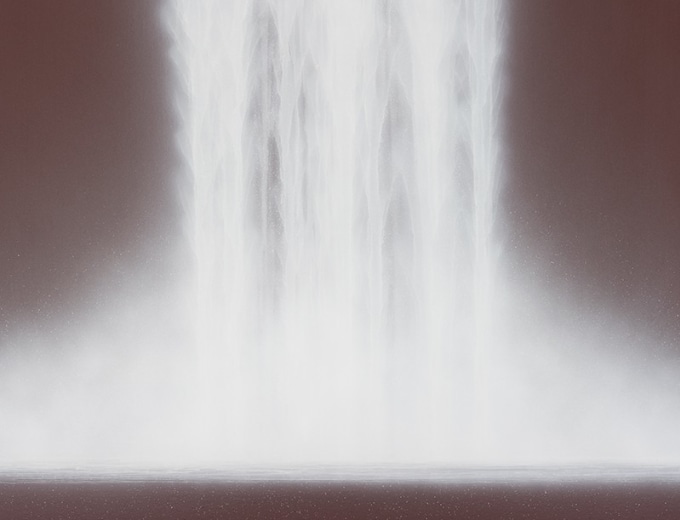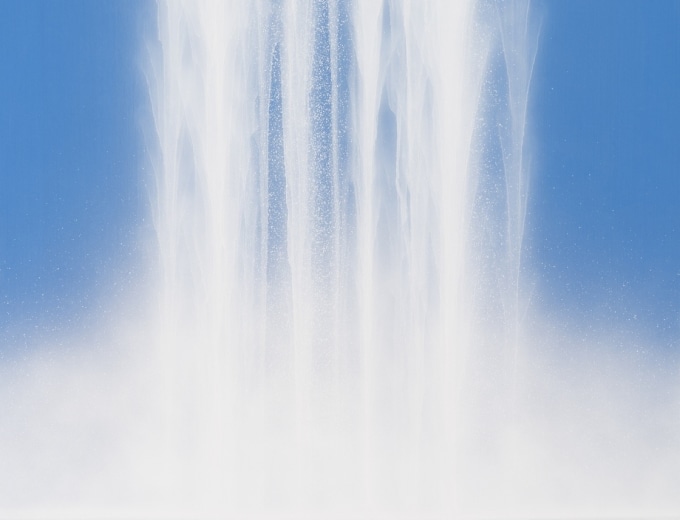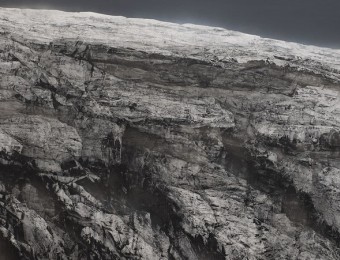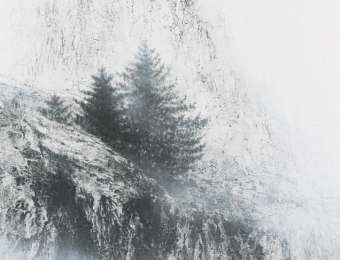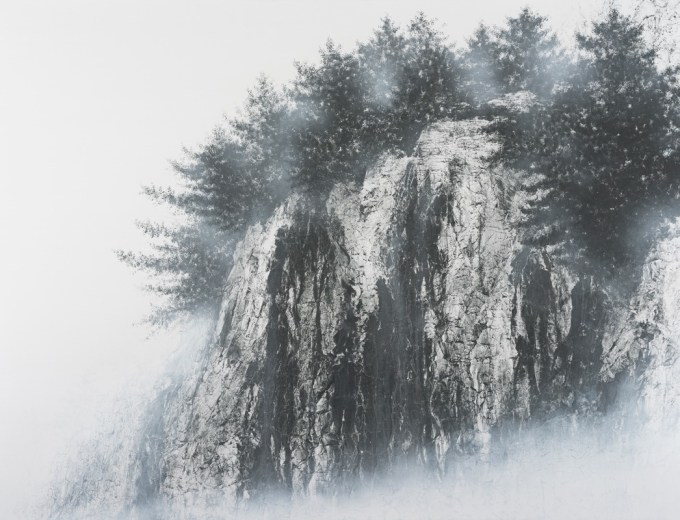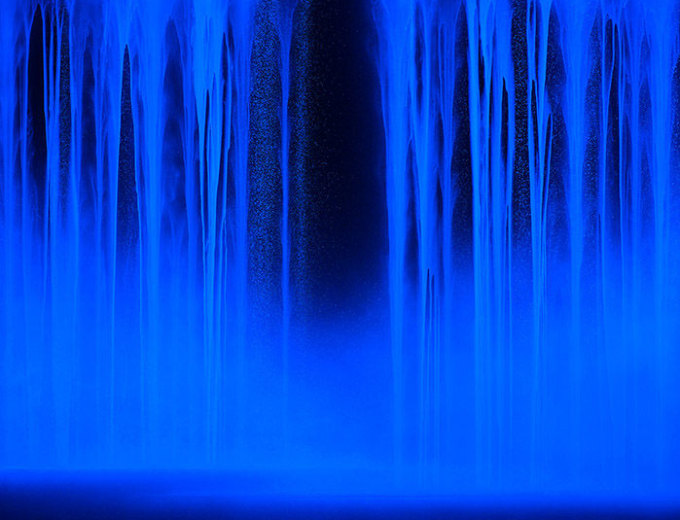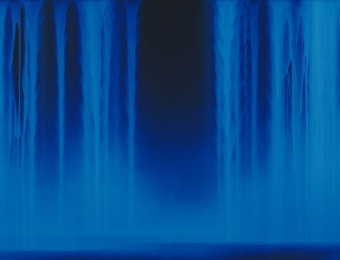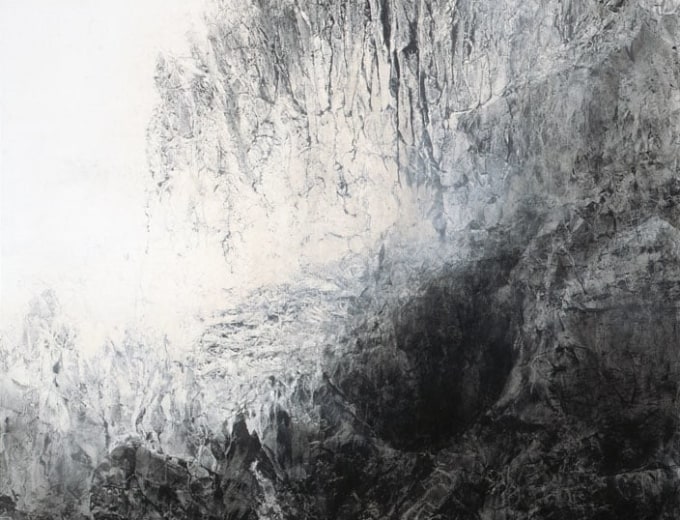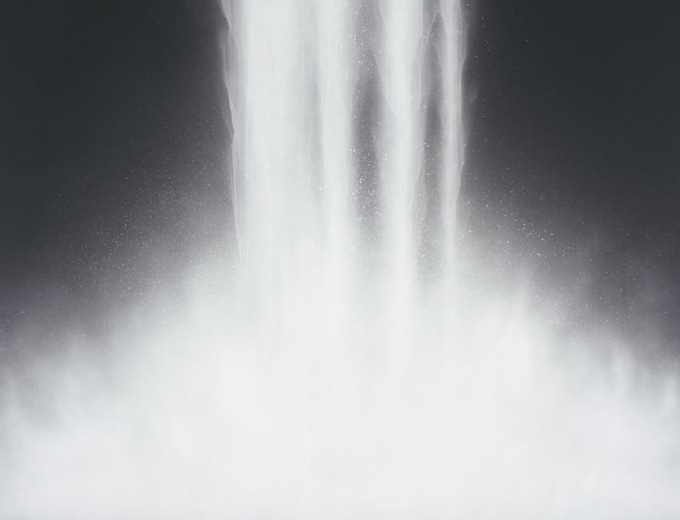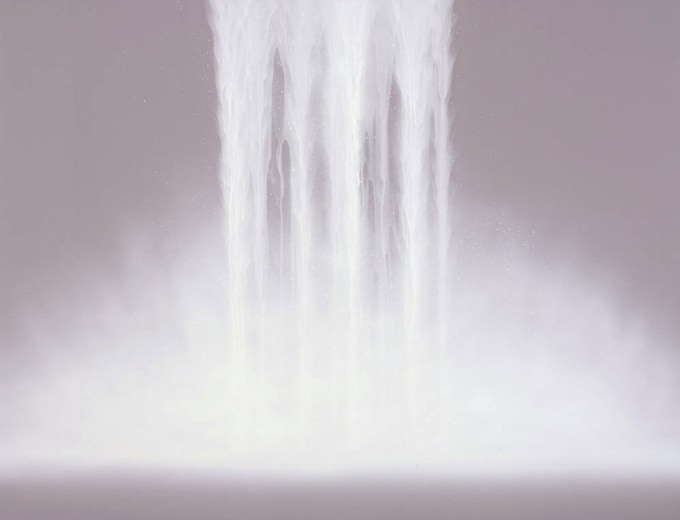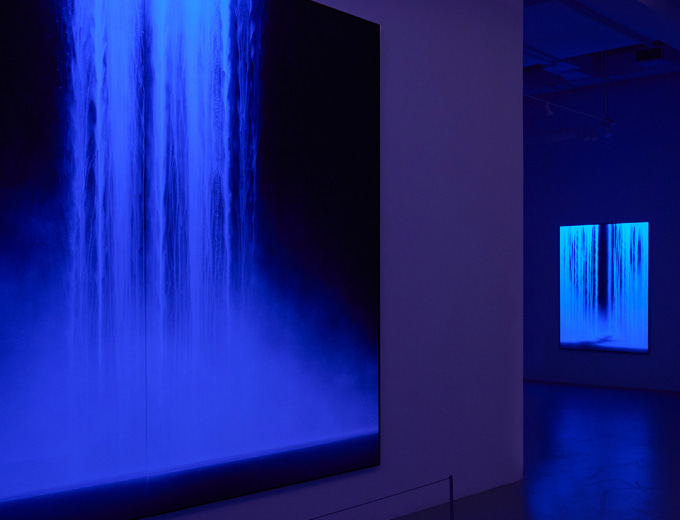
New York-based painter Hiroshi Senju (b. 1958, Tokyo) is renowned worldwide for his sublime waterfall and cliff images, which are often monumental in scale. He combines a minimalist visual language rooted in Abstract Expressionism with elements of traditional Japanese painting.
Hiroshi Senju was the first Asian artist to receive an Honorable Mention Award at the Venice Biennale (1995), and has participated in numerous notable exhibitions including The New Way of Tea, curated by Alexandra Munroe, at the Japan Society and Asia Society, New York, 2002; Paintings on Fusuma at the Tokyo National Museum, 2003; and Frontiers Reimagined at the Venice Biennale, 2015. In 2021, Senju produced a monumental, site-specific fluorescent waterfall installation for the Art Institute of Chicago. It was on view for eight months in a gallery in the Asian wing designed by Pritzker Prize-winning architect Tadao Ando. The fifty-foot wide folding screens are now part of the museum’s permanent collection. In 2023 two specially commissioned waterfall paintings were installed in the United States Embassy in Tokyo. A waterfall painting is currently on view in the Victoria & Albert Museum in London.
Among his many honors, Senju was awarded the Foreign Minister’s Commendation from the Japanese government for contributions to art in 2017, and in the same year, was honored with the Isamu Noguchi Award. In 2020, he was awarded the 77th Imperial Prize and Japan Art Academy Prize. In 2022 he was elected to the Japan Art Academy for outstanding achievements in artistic activities, the youngest artist to be so honored.
Notable public installations include seventy-seven murals at Juko-in, a sub-temple of Daitoku-ji, a Zen Buddhist temple in Japan, and multiple monumental waterfalls at Tokyo International Airport (Haneda). The Benesse Art Site of Naoshima Island houses two large-scale installations. The artist’s monumental cliff and waterfall paintings for the Kongobuji Temple at Koyasan—a UNESCO World Heritage Site and sacred Buddhist monument—traveled to museums throughout Japan before being consecrated and installed in 2020. Assouline released a lavish coffee-table volume featuring 100 color photographs documenting this historic project in 2022.
Senju’s work is in the permanent collections of the Victoria & Albert Museum, London; The Metropolitan Museum of Art and Brooklyn Museum, New York; Los Angeles County Museum of Art and Museum of Contemporary Art, Los Angeles; Asian Art Museum, San Francisco; Nelson-Atkins Museum of Art, Kansas City, Missouri; Royal Ontario Museum, Toronto; Museum of Modern Art, Toyama, Japan; Yamatane Museum of Art, Tokyo; Tokyo University of the Arts; and Kushiro Art Museum, Hokkaido. In 2009, Skira Editore published a monograph of his work titled Hiroshi Senju. The Hiroshi Senju Museum Karuizawa in Japan opened in 2011.
Hiroshi Senju lives and works in New York.

